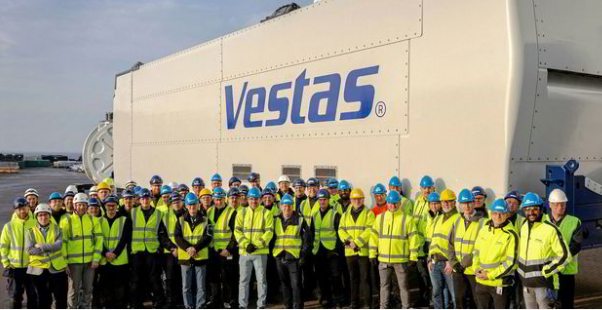
The first of Vestas’ next-generation EnVentus wind turbine nacelles has been completed at the OEM’s factory in Ringkøbing, Denmark, less than a year after the launch of the design.
Unit number one of the 5MW platform is a 5.6MW model that will fly a 150-metre rotor during upcoming trials at Østerild, but the modular concept has already been tailored in two other versions, a 3MW variant, the V138-3.0, and a top-of-the-range giant, the V162-5.6.
Since unveiling the EnVentus, which chief technology officer Anders Vedel told Recharge in May gives “flexibility while maintaining benefits of scale”, Vestas has booked more than 500MW in orders for the machine.
The OEM sees the design philosophy embodied by the EnVentus concept as key to arming it to confront unrelenting customer demand for cost reduction in a post-subsidy, auction-driven energy market – benchmarked against solar power's ever-lower levelised cost of energy (LCOE) – while upping its own commercial performance.
“The change that we are undertaking [from being a supplier of wind turbines] to being a supplier of sustainable energy solutions – it is a natural step,” says Vedel. “And the modularity similarly is a necessity if we in wind power want to continue to drive efficiencies that will make us competitive in [terms of] the energy price.”
In September, Vestas announced it would debut the V150-5.6MW at Notus Energy Plan’s Beesenberg II project, in Brandenburg, Germany, with a pair of the machines wired into the Beesenberg and Lübbenow development, where a batch of V150-4.2MW machines, ordered in 2018, are currently being erected.
And last month the OEM secured a contract for 101MW’s-worth of the V162-5.6s for two projects being developed by Puhuri in Finland.
Facing ongoing margin-tightening in an evermore competitive, auction-driven energy market, Vestas and peer turbine makers GE, Siemens Gamesa, Nordex and Enercon have each this year engineered innovative 5MW-plus machines that will significantly reduce wind’s LCOE to under €30 ($33.60) per MWh, outstripping in-service 3MW and 4MW models by 30-50% in annual energy production.